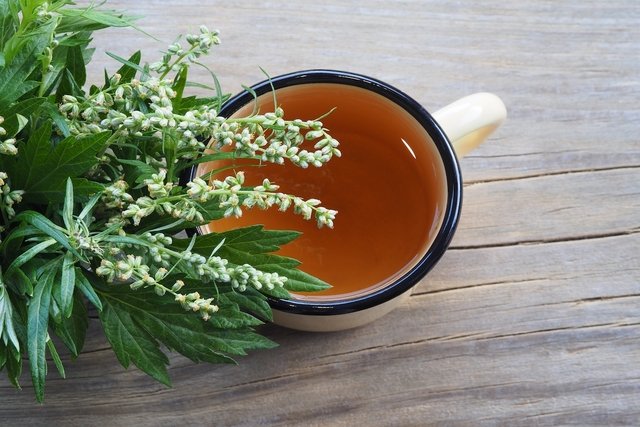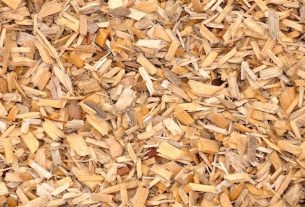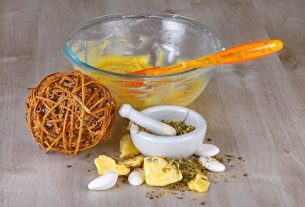Artemisia is a medicinal plant, of the species Artemisia vulgarisindicated to help treat irregular menstruation, menstrual cramps or anxiety, as it has anti-inflammatory, antioxidant, antispasmodic and antiseptic properties.
The normally used parts of artemisia, which is also popularly known as chamomile, fireweed, queen of herbs, are the leaves and flowers, for preparing tea or compresses.
Mugwort can be purchased at herbalists, health food stores or compounding pharmacies, and should be used under the guidance of a doctor or herbalist, as its use can cause seizures, allergic reactions or even miscarriage if used during pregnancy.

What is it for
Artemisia is indicated to help in the treatment of:
- Fever or asthma;
- Poor digestion or stomach pain;
- Intestinal colic or intestinal worms;
- Liver or gallbladder diseases;
- Muscle pain or rheumatism;
- Headache or migraine;
- Irritability, depression, anxiety or stress;
- Insomnia or chronic fatigue;
- Skin wounds;
- Epilepsy.
Additionally, mugwort has uterine-stimulating properties, which can help stimulate menstrual flow, regulate menstruation, or relieve cramps.
Some studies (1,2) show that mugwort has substances with anti-inflammatory action, such as artemisinin and cardamonin, which help reduce inflammation caused by Crohn’s disease, which can help improve the mood and quality of life of people with this disease. However, more studies are still needed to prove this benefit.
Although it has many benefits, this medicinal plant should not replace medical treatment or be used without guidance from a doctor or healthcare professional with experience in the use of medicinal plants.
Artemisia has anti-inflammatory, antioxidant, antispasmodic, antiseptic, antimalarial, vermifuge, antihypertensive and liver protective properties, due to the presence of flavonoids, sesquiterpenes and phenolic acids in its composition.
Read too: Losna: what it is for and how to use it
How to use
The normally used parts of mugwort are the flowers or leaves from which active substances with medicinal properties are extracted.
1. Mugwort tea
Artemisia tea can be prepared with the flowers or leaves of this plant, to help treat poor digestion, fever, menstrual or intestinal cramps, headache, or anxiety, for example.
Ingredients
- 2 tablespoons of dried mugwort leaves;
- 1 liter of boiling water.
Preparation mode
Place the mugwort leaves in boiling water and let it rest for 10 minutes. Strain, wait for it to cool and drink 2 to 3 cups a day.
Read too: 15 home remedies for poor digestion
2. Mugwort compress
Mugwort compress can be used to apply to broken or irritated skin, but should not be used on open or bleeding wounds.
Ingredients
- 2 tablespoons of artemisia flowers;
- 500 mL of water.
Preparation mode
Put the mugwort flowers and water to boil for 1 minute. Cover and let rest for about 15 minutes. Then, wait for it to warm and apply to the affected skin area, using sterile gauze or a clean, dry cloth, 1 to 3 times a day.
Possible side effects
The most common side effects that may arise during the use of mugwort are excitement of the central nervous system, vasodilation, convulsions, liver and kidney problems, and mental and psychological problems.
Additionally, mugwort can cause miscarriage in pregnant women.
Mugwort can also cause allergic reactions, with symptoms related to sinusitis, sneezing, and can cause dermatitis or the formation of blisters on the skin.
Therefore, it is important that the use of mugwort is carried out under the guidance of a doctor or herbalist.
Who shouldn’t use
Mugwort should not be used by pregnant women, as it can cause uterine contractions and cause miscarriage. This plant should also not be used by breastfeeding women. See other medicinal plants contraindicated during pregnancy.
Furthermore, this plant should not be used by people who are allergic to mugwort or ragweed, chrysanthemum, marigold, daisy, sunflower, birch, celery, carrot, white mustard, honey, royal jelly, hazelnut, olive, latex, peach, apple , kiwi, sage, celery or tobacco.
Bibliography
- SHARIFI-RAD, J.; et al. Artemisia spp.: An Update on Its Chemical Composition, Pharmacological and Toxicological Profiles. Oxide With Cell Longev. 2022. 5628601, 2022
- HANH, TTH; et al. Two new eudesmane sesquiterpene glucosides from the aerial parts of Artemisia vulgaris. Nat Prod Res. 37. 9; 1544-1549, 2023
- EKIERT, H.; et al. Significance of Artemisia Vulgaris L. (Common Mugwort) in the History of Medicine and Its Possible Contemporary Applications Substantiated by Phytochemical and Pharmacological Studies. Molecules. 25. 19; 4415, 2020
- TWO, R.; et al. Towards a better understanding of Artemisia vulgaris: Botany, phytochemistry, pharmacological and biotechnological potential. Food Res Int. 109. 403-415, 2018
- NIGAM Manisha et al. Bioactive Compounds and Health Benefits of Artemisia Species. Natural Product Communications. 1-17, 2019
- FRAGOSO, Thais Palmeira. ANALYSIS OF THE MEDICINAL USE OF THE GENUS ARTEMISIA IN BRAZIL BASED ON TRADITIONAL, SCIENTIFIC, POLITICAL AND PATENTARY FACTORS TO SUBSIDIZE THE NATIONAL MEDICINAL AND PHYTOTHERAPY PLANTS PROGRAM. Monograph presented to the Lato Sensu Postgraduate Course as a requirement to obtain the title of Specialist in Innovation Management in Phytomedicines, 2014. FUNDAÇÃO OSWALDO CRUZ.
- FLORIEN. Artemisia. 2016. Available at: <http://florien.com.br/wp-content/uploads/2016/06/ARTEMISIA-1.pdf>. Accessed on May 25, 2020

Sign up for our newsletter and stay up to date with exclusive news
that can transform your routine!
Warning: Undefined array key "title" in /home/storelat/public_html/wp-content/plugins/link-whisper-premium/templates/frontend/related-posts.php on line 12
Warning: Undefined array key "title_tag" in /home/storelat/public_html/wp-content/plugins/link-whisper-premium/templates/frontend/related-posts.php on line 13



